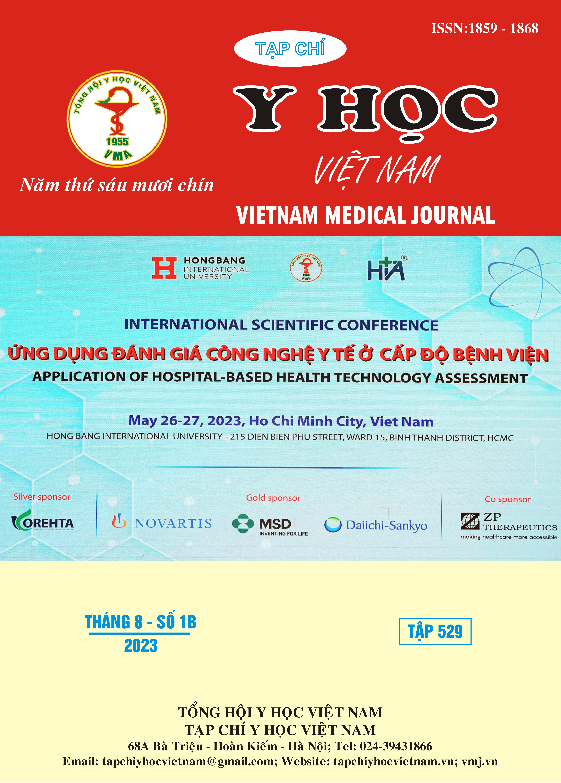IMAGING CHARACTERISTICS OF CORONARY ARTERY LESIONS BY COMPUTED TOMOGRAPHY IN DIABETES PATIENTS ACCORDING TO CAD - RADS CLASSIFICATION
Main Article Content
Abstract
Objectives: To study the characteristics of coronary artery lesions in diabetes patients by computerized tomography according to CAD-RADS classification. Subjects and methods: A retrospective, descriptive cross-sectional study performed on 67 diabetic patients undergoing coronary computed tomography angiography at the University Medicine Center in Ho Chi Minh City from January, 2017 to Decmeber, 2021. Result: The rate of coronary heart disease is 71.6%. In which, patients with coronary artery stenosis are more dominant than those with single branch coronary artery stenosis; the most common left anterior descending artery (LAD) stenosis; stenosis < 50% (CAD - RADS < 3) has the same rate as stenosis ³ 50% (CAD - RADS ³ 3). Calcified atherosclerotic plaque accounted for the majority (58.3%). The group with diabetes for ³ 10 years had more severe CAD-RADS stenosis, as well as a higher rate of multivessel lesions and coronary calcification scores than the group with diabetes < 10 years. Conclusion: The results of our study demonstrate the role of duration of diabetes for detecting the degree of stenosis and the risk of CAD, and suggest a potential of evaluation CAD by Coronary Computed Tomography Angiography in patients with longer diabetes duration.
Article Details
Keywords
CAD – RADS, Diabetes, Coronary Computed Tomography Angiography
References
2. Tran Quoc Bao, Hoang Van Minh, Vu Hoang Lan, al. e. Risk factors for Non-Communicable Diseases among adults in Vietnam: Findings from the Vietnam STEPS Survey 2015. J Glob Health Sci 2020 Jun 2020.
3. Joshua A. Beckman MAC, Peter Libby Diabetes Atherosclerosis Epidermiology, Paphythosiology and Management. JAMA May 15, 2002 2002; Vol 287, No 19.
4. Fuster V MP, Fayad ZA. Atherothrombosis and high-risk plaque. Part I: Evolving concepts. J Am Coll Cardiol 2005; 46: pp. 937-54.
5. Schuetz GM ZN, Schlattmann P, et al. Meta - analysis: Non - invasive Coronary Angiography using Computed Tomography versus Magnetic Resonance Imaging. Ann Intern Med 2010 2010: pp.167-77.
6. Anand SS, Islam S, Rosengren A, et al. Risk factors for myocardial infarction in women and men: insights from the INTERHEART study. European heart journal 2008; 29(7): 932-40.
7. Park G-M, An H, Lee S-W, et al. Risk score model for the assessment of coronary artery disease in asymptomatic patients with type 2 diabetes. Medicine 2015; 94(4).
8. Kim J-J, Hwang B-H, Choi IJ, et al. Impact of diabetes duration on the extent and severity of coronary atheroma burden and long-term clinical outcome in asymptomatic type 2 diabetic patients: evaluation by coronary CT angiography. European Heart Journal-Cardiovascular Imaging 2015; 16(10): 1065-73.
9. Fox CS, Sullivan L, D’Agostino Sr RB, Wilson PW. The significant effect of diabetes duration on coronary heart disease mortality: the Framingham Heart Study. Diabetes care 2004; 27(3): 704-8.
10. Haffner SM, Lehto S, Rönnemaa T, Pyörälä K, Laakso M. Mortality from coronary heart disease in subjects with type 2 diabetes and in nondiabetic subjects with and without prior myocardial infarction. New England journal of medicine 1998; 339(4): 229-34.


